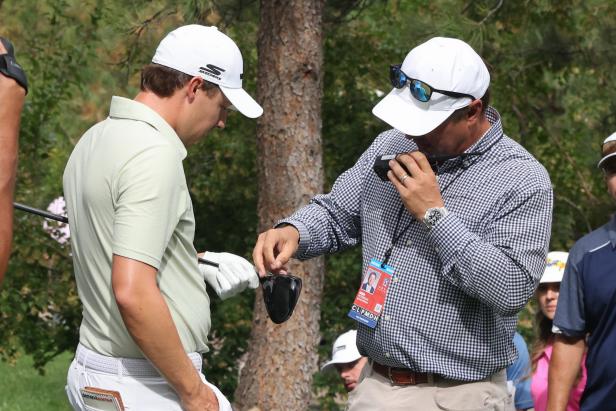Matt Fitzpatrick was denied the chance to replace his cracked driver. Was that the correct call?

Question: I’m totally confused. Why couldn’t Matt Fitzpatrick replace a driver at the BMW Championship that had a crack in it. Don’t the rules allow for that?
Answer: Glad you asked, as the coverage on this, including our own, was a shade incomplete. For those not aware of the situation, here’s what happened. During the final round of the BMW, Fitzpatrick noticed a crack in his Titleist TSi3 driver on the eighth tee. Seeking to replace the damaged club under Model Local Rule G-9, Fitzpatrick asked for a ruling. A discussion ensued, and then his request to replace the club was denied.
Fitzpatrick was aghast. “This is outrageous. It’s an absolute joke,” he said to the official who denied his request. He continued, “There’s an obvious crack there, that’s causing a defect of the ball flight. . . . So, I’m going to have to use 3-wood the rest of the day?”
Fitzpatrick’s displeasure was understandable. But was the call correct under the rules?
Here is where the subjectivity of Model Local Rule G-9 comes in. It reads as follows:
If a player’s club is “broken or significantly damaged” during the round by the player or caddie, except in cases of abuse, the player may replace the club with any club under Ruke 4.1b(4).
When replacing a club, the player must immediately take the broken or significantly damaged club out of play, using the procedure in Rule 4.1c(1).
For the purposes of this Local Rule:
A club is “broken or significantly damaged” when:
The shaft breaks into pieces, splinters or is bent (but not when the shaft is only dented);
The club face impact area is visibly deformed (but not when the club face is only scratched);
The clubhead is visibly and significantly deformed;
The clubhead is detached or loose from the shaft; or
Exception: A club face or clubhead is not “broken or significantly damaged” solely because it is cracked.
That’s a pretty notable exception, and one PGA Tour Chief Referee Stephen Cox leaned on:
“In our assessment, not only with the first official but also a couple of others including myself, that threshold of being significantly damaged hadn’t been met,” Cox said. “Although there was a small crack in the face, there was no separation in the metals, and on that basis, that threshold wasn’t met, so his only choice in that case was to continue using that club. Now, if that club were to get worse, then we would obviously continue to reassess, and at that point he may have been able to have taken it out, but in his case, I think he chose not to continue to use it and proceeded with his 3-wood from then on.”
In other words, whether or not Fitzpatrick was wronged depends on interpretation. Feel free to make your own.
Related
5 Things I Never Play Golf Without: David Dusek
Our 11-handicap equipment writer always brings his favorite divot repair tool, a portable speaker and some high-tech gear to the course.As long as the weather i
Donald Trump’s golf course wrecked by pro-Palestine protesters
Pro-Palestinian protesters have vandalized parts of U.S. President Donald Trump's golf course in Scotland in response to his proposal for the reconstruction of
Man holding Palestinian flag scales London’s Big Ben hours after…
CNN — Emergency services were called to London’s Palace of Westminster on Saturday a
EPD: Drunk driver parked car on golf course
EVANSVILLE, Ind. (WFIE) - Evansville police say they arrested a man after finding him drunk in his car that was parked on a golf course.Officers say they were c











